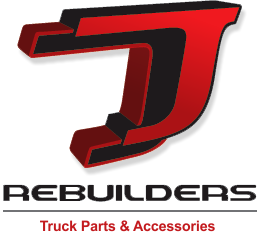Understanding EPA Regulations for Diesel Engines

Commercial vehicles generate enormous revenue for companies. However, they can present environmental and health challenges, especially if they do not receive proper maintenance. The United States government implemented the so‐called EPA emissions rule—emission regulations for diesel engines created to protect the public and the environment. All owners and managers of commercial vehicles must comply with these standards in order to operate without any issues.
The Importance of Diesel Truck Emission Regulations
Although the electric vehicle market is booming, diesel is likely to remain the primary means of commercial transportation for the coming decades. With more trucks on the road, it is not difficult to conclude that carbon dioxide (CO2) and nitrogen oxides (NOx) emissions will increase. These emissions affect people’s health, and greenhouse gases (GHG) contribute to climate change.
Which Agency Regulates Emissions?
The United States Environmental Protection Agency (EPA) is generally responsible for protecting public health and the environment at the federal level. It is the agency in charge of emission control regulations, which help enforce the environmental laws passed by Congress. In addition to setting national environmental protection standards, the EPA works closely with state agencies to ensure efficient implementation.
A New, Stricter Regulation
The state of the planet is delicate, which is why stricter regulations are needed to ensure its protection. The new EPA rules will prevent more than 7 billion tons of carbon emissions that warm the planet over the next three decades and will provide nearly 100 billion dollars in net annual benefits.
The new emission control regulations apply to models from 2027 to 2032 and will significantly reduce greenhouse gas emissions that contribute to global warming, as well as other atmospheric pollutants such as nitrogen oxides and particulate matter from new sedans, SUVs, and pickups.
Additionally, the regulation will help combat the climate crisis and generate widespread reductions in air pollution, while accelerating the adoption of cleaner vehicle technologies. The agency is finalizing the regulation as clean vehicle sales—including plug-in hybrids and fully electric vehicles—reach record highs in 2023.
Rules and Regulations: Today and Tomorrow

Analyzing the context of emission regulations for commercial vehicles helps us understand how the laws have evolved. It also provides better insight into the current regulatory requirements and future expectations.
The Clean Air Act
The Clean Air Act (CAA) of 1970 is a federal law that regulates air emissions from both mobile and stationary sources to protect the public and the environment against pollution.
The First Emission Standards
In 1974, the EPA established the first heavy-duty engine emission standards to reduce air pollution. In the 1980s and 1990s, these standards were further tightened.
Reduction of Road Engine Emissions
In October 1997, the EPA adopted a new emission standard for heavy-duty vehicles for the 2004 model year and later. The goal was to reduce NOx emissions from on-road heavy-duty diesel engines.
Regulation of Sulfur Emissions
The next emission standard, for the 2007 model year, was signed in December 2000. It featured a gradual implementation schedule from 2007 to 2010 and established regulations for diesel with ultra‐low sulfur levels of 15 parts per million (ppm).
The Clean Trucks Initiative
In 2018, the EPA launched the Clean Trucks Initiative. The objective was simple: to further reduce NOx emissions from heavy-duty engines.
Reduction of Heavy-Duty Vehicle Pollution
In 2022, the EPA published a proposal to establish new guidelines to reduce pollution from heavy-duty engines and vehicles starting in 2027. The EPA aims to significantly reduce soot and smog in heavy-duty gasoline and diesel engines.
The proposal also sets stricter greenhouse gas standards for specific categories of commercial vehicles and seeks to modify confidentiality requirements for certain information submitted to the EPA. However, these changes are subject to the Clean Air Act.
Reduction of Greenhouse Gases
The EPA has also announced a plan to reduce GHG emissions, focusing on light and medium-duty vehicles, such as commercial vans and pickups. The agency projects a reduction of between 24% and 25% in carbon dioxide emissions from the date of implementation. The ultimate goal is to incorporate zero-emission vehicle technologies into the regulatory framework.
Implementation of Laws on Mobile Sources

Vehicle engines, recreational vehicles, and engines in general must comply with the emission standards set by the CAA. In addition, the CAA regulates the composition of fuel used by mobile sources, such as gasoline, diesel, ethanol, biodiesel, and blends of these fuels.
New vehicles and engines must have a certificate of conformity issued by the EPA before entering or being imported into the United States. This certificate indicates that the engine or vehicle meets all necessary emission requirements.
Regarding fuels, the CAA regulates the fuel used by motor vehicles and other machinery. A clean fuel helps reduce the harmful emissions produced by a wide variety of motor vehicles, engines, and machines.
The EPA’s standards require that all fuels and fuel additives produced, imported, and sold in the United States meet specific criteria. The EPA conducts targeted and random inspections to assess compliance with these standards and takes enforcement actions against violators.
Furthermore, transportation fuel sold in the U.S. must contain a minimum volume of renewable fuel in order to reduce greenhouse gas emissions and reliance on petroleum-derived fuels. Renewable fuel producers and importers generate an identification number for each gallon of renewable fuel. Refineries and importers must acquire these numbers to demonstrate compliance with the standards.
The Future of Vehicles and the Planet
Commercial vehicles are assets that generate daily revenue for companies. However, they require proper maintenance to avoid health and environmental issues. Diagnostic and repair solutions, whether in workshops or on the road, allow you to monitor your fleet to ensure optimal vehicle performance and compliance with commercial truck emission laws.
